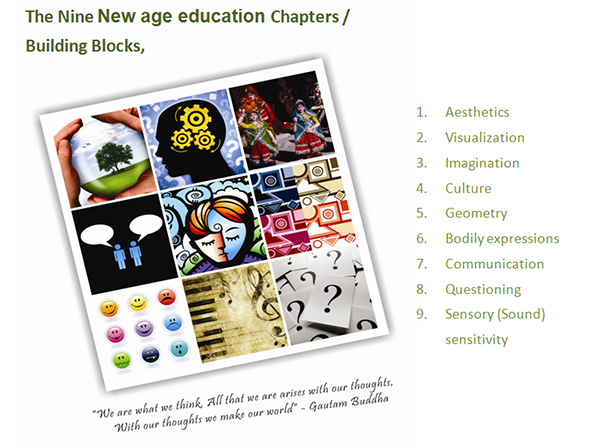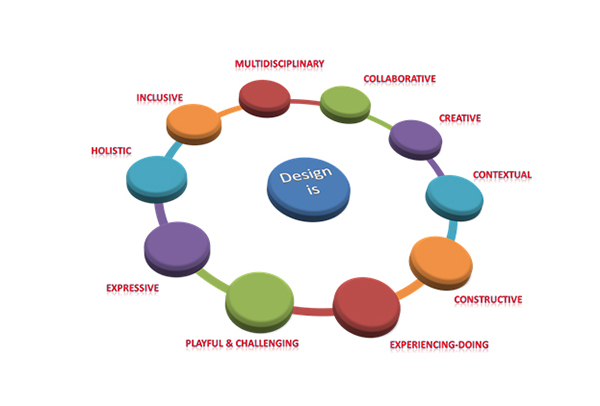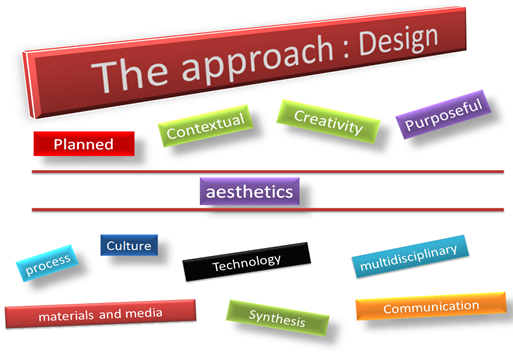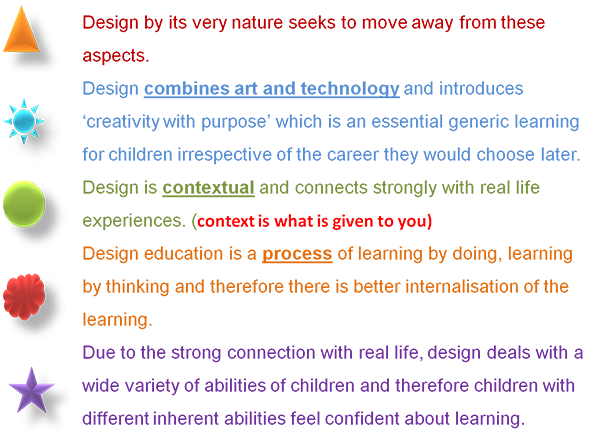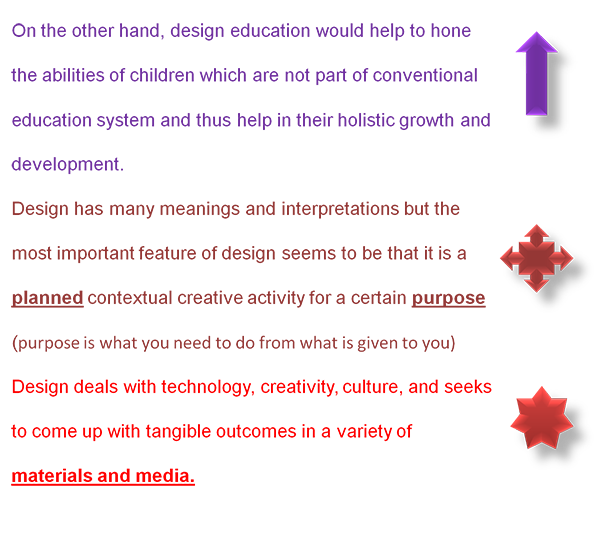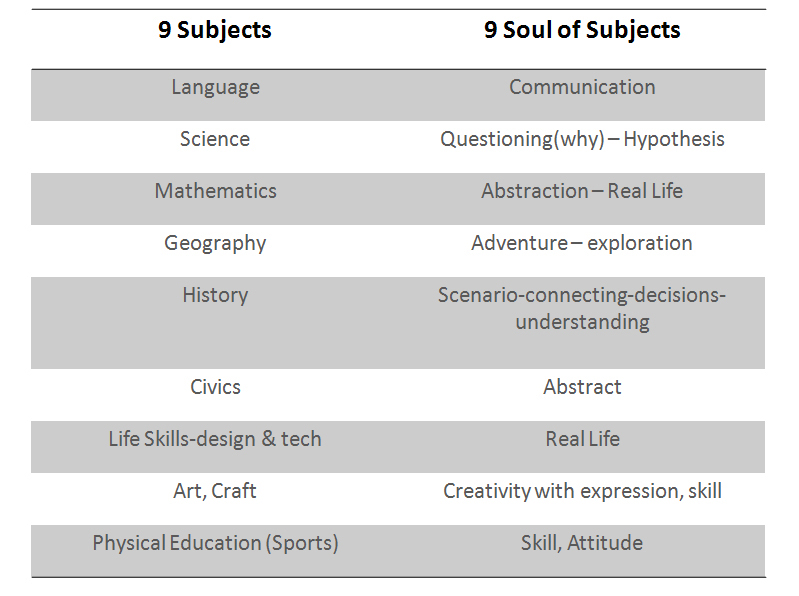How? –The Link between dreams and reality
This section is the link between the why and the what; necessarily it talks about the essence of what we do. 9 in 297 are the 9 solutions that incorporate 9 New Age Education Building Blocks & Subjects, 9 Applications for Real Life & Innovation and 9 Soul of Subject & Real Life Skills. This section shall sequentially introduce one to the 21st Century traits that we wish to nurture, 9 Solutions, Pedagogy, and Curriculum.
Before we get into the interesting 9 solutions, it will be prudent to pause for a second and present the 21st Century traits that we wish to nurture amongst the participants, these traits act as commandments for us,
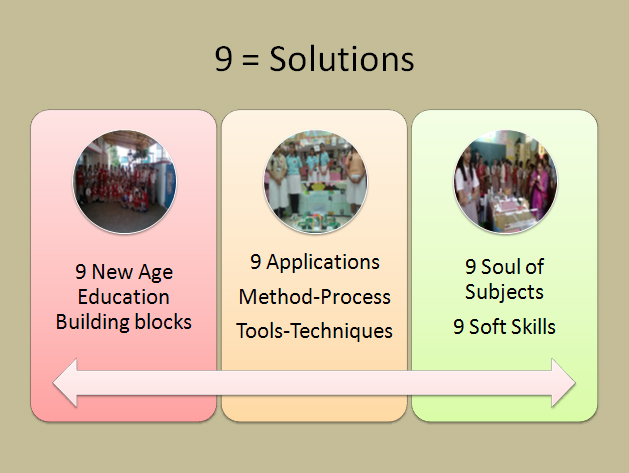
The first of the above 3 mentioned is the 9 New Age Education Building blocks; these are called so for the very reason that contemporary times call for newer subjects (interventions) that will address the 21st century requirements.
A closer look at these 9 shall exhibit the fact that all of us in current times need these more than ever – both for surviving and thriving in changing times.
These 9 building blocks complement for the 9 facets of design that are brought out using the 9 multiple intelligences. These together have the power to address the wicked problems that we face in our today. We strongly believe that these building blocks shall lay the founding stones for newer educational interventions in future.
Why Design & innovation pedagogy?
Design pedagogy helps in,
- Being closer to real life experiences
- Understanding versus rote learning
- Shift away from over emphasis of 3Rs – reading, writing, arithmetic
- Developing multiple abilities of children
- Creatively engaging with real life context
“It is a Planned Contextual Creative Activity with a Certain Purpose.”
Design deals with a wide variety of abilities of children and therefore children with different inherent abilities feel confident about learning in this way.
First : Solve a Problem or Do it within the Confines of the Context.
Second : Get Connected with Real Life & Applied Creativity.
Innovation is the currency of modern times.
Contemporary times call for rediscovering, revitalizing and rejuvenating everything – from individual, society, industry and world. It has thus become a must for the young and old alike to adapt to the scale, scope and speed of the changing world. This can happen if innovation can be built into the pedagogy.
All the assignments, mini projects, projects at Futurz Xplored incorporates – original thinking – critical-lateral-divergent, contextualizing each creation through quantity of ideas, quality of ideas, variety of ideas and feasibility of solution.
Innovation in addition to being the pedagogy of the curriculum is also provided a larger role in the curriculum – by constructing a full-fledged subject around the same – innovation 4 School.
The 9 soul of Subjects
At Futurz Xplored we strongly believe that the present day subjects need to be rediscovered– whereas a lot of work is happening in this space, that is, to make the subjects easy and fast to learn by simplifying the content as well as making the content interesting for easy grasping and fun; yet there are a very few who are talking about the very essence of the subjects – the very soul of the subjects being rediscovered and addressed.
Just for an example at Futurz Xplored we believe that it is communication that is at the core of language teaching / learning rather than the language itself. The moment the beauty and context of communication is understood – people shall find means and ways to expressing themselves – be it poetry, prose, anecdote, story, quotes, letters etc. Similarly the moment we nurture a child to be curious, explorative and adventurous – they automatically discover the world around them – learning Geography by themselves.
21st century traits
Holistic perspective, interdisciplinary approach, group working, inter dependence, newer ways of expression are gaining over the linear approach. Thus, newer traits is the call of the times. We also believe that these very traits shall be the currency of modern times. These traits are,
- Original Thinking : Critical, Lateral, Divergent
- Decision Making
- Problem Solving
- Purpose, meaning, relevance
- Connecting & Communicating : Self, others, environment
- Scenario managing : Grasping, Flexibility & Adaptability
- Self learning, Sensitivity, Pro activeness

Global + local i.e. Glocal best practices and philosophies incorporated in curriculum for enriched learning,
“Children are capable to learn things on their own. This view was put forth by Maria Montessori and resulted into furthering of a system which is primarily Learner Centric and in which Teachers act as Facilitators.” Each Child is unique in Skills, Thinking & Attitude.
The multiple intelligence system put forth by Howard Gardener is incorporated into the curriculum. This considers many intelligence including interpersonal, intrapersonal, visual spatial, logical mathematical, bodily kinesthetic, naturalistic, verbal linguistic and musical.
Generally Education models look at the Cognitive Development of a Child, where as we have tried to incorporate along with Cognitive, Physical, Sensory and Social Development of a child using philosophies of Piaget & Vygotsky.
Our education is a radical shift,



When we say learner centric, child learns on own and experiences the process. Thus they start evolving themselves and start experiencing their individuality. They start getting the sense of worth, trust, comfort, acceptance that leads to their stability. As children start learning by doing, they start enriching their experiences that develop their perception that facilitates their judgment thus develops their cognitive skills.
Child’s learning enriches as he interacts and learns from others and hence their experiences alter and transform. In the process of getting attention and approval they start looking upon teacher or parent as role model and this augments their experiences.
Curriculum Emphasis,
The depth of the curriculum can be gauged from the fact that it has taken into consideration all of the following, so that there are numerous ways of learning the same topic, this comprehensiveness as well as depth elevates the curriculum to a subject level,
- Based on Age : Incrementally challenging year after year : 9 years to 22 years
- Based on kind of Engagement: Do It Yourself (DIY), Exercises, Assignments, Mini Projects, Projects
- Based on objective :
- Sensitization – Application
- Creativity, Innovation, Knowledge, Leadership, Entrepreneurship, Management, General.
- Based on Level of difficulty: Level I to V
- Based on emphasis given to topics (such as Exploration, Experimentation, and Expression etc.)
- Based on emphasis upon desired domain expertise (such as Innovation, Research, Entrepreneurship, Technology etc.)
- Based on Mode of conduct : Learner centric, Specialized Mentoring
- Based on method of delivery : In School, Workshop, Boot Camp, Lab models
- Based on Self / Group
- Based on Inward-out / Outward-in approach
- Approach : Classroom, Outdoor, Field Trips
The curriculum has a tight-loose malleable composition, so that various sections, steps, modules could be added or deleted depending upon the desired objective and resulting learning outcome. This also gives the curriculum a game like incrementally challenging playful structure which can span the spectrum from gifted child program to a regular child program.
- Uniqueness of the curriculum lies in addressing “How” and “How to” along with “Why” (outlined skills, thinking and attitude) and “What” (traits, process and steps), example, the curriculum DOES NOT JUST identify that visualization, imagination, empathy etc. are important traits for holistic development of child AND then provide a process or steps that include these in a project, BUT, the curriculum also outlines “How to – visualize, imagine, empathize etc.” using exercises, assignments, mini projects and projects.
- Like art is creativity with expressions: Design along with that is creativity with an objective or purpose. In the developed assignments and projects the objective/purpose is inbuilt. We aim at how well a child is able to,
First: Solve a problem or Do it within the confines of the context.
Second: Get connected with real life and applied creativity.
Third: Communicate the same using material, medium and technology.
- The curriculum connects children with real life through assignments and projects, this helps them seek and understand meaning and practical applications of the concepts they have learnt both in their academic subjects, and, life in general. This also helps develop empathy; moving from self, others, environment.
- The age wise incrementally challenging curriculum is implemented in a hands-on, play/game like manner that facilitates a mindset of inquisitiveness, encouraging exploration and experimentation, and developing fearlessness against failure. Treating failure as a learning step. Such environment also encourages and develops sportsman spirit attitude in academics. Encouraging simultaneous self and collaborative learning that leads to independent-individual thinking as well as collaborative-sharing team working.
- The joy of learning is rekindled as children learn in a progressive manner moving from real to abstract or from known to unknown. It has been generally found while teaching abstract concepts such as mathematics and language that children learn better when they are practically shown the application of the concept or when they are given examples that they know or can touch, see, feel, hear, and smell. Thus, their conceptual understanding of topics becomes very strong and the speed of grasping is enhanced. This has also been found beneficial in cases where children develop a phobia of mathematics only because they missed out on understanding the underlying fundamental concepts in their early years.
- The curriculum aims at developing and using multiple ways of thinking (logical, analytical, lateral, divergent) in each exercise / project, this results into simultaneous development and understanding of scientific and design temperament and their contextual usefulness.
- The curriculum lays emphasis upon Quantity, Quality and Variety of ideas generated through random, structured or tool and techniques (both individually and in groups) help in not just finding multiple ways/solutions/alternatives, but, it also helps in appreciating multiple viewpoints and perspectives. The curriculum gives due recognition to structured methods, tools and techniques for idea generation so that children learn to apply process orientation towards creativity.
- Emphasis upon Research, Analysis and Synthesis encourages children to explore and experiment yet always keep the purpose and context in preview by understanding feasibility at all stages.
- Unique self evaluation based on skill, thinking and attitude provides a comprehensive understanding to a child about his/her work, allowing a child to show his ability and individuality and NOT test it, thus, eliminating the fear of marks-grades from the learning process, yet retaining the essence of learning.
- This learner centric / mentoring curriculum is universal in its nature yet connects to local region, engaging culture centric creativity. In this age the flattened world means that the desired traits needed for holistic development of a child are the same across the world, however, their understanding and application happens best when understood in the local regional/social/ cultural/economic context. Such an arrangement can be experienced in the structure of each learning activity of this curriculum.
- Expression is one of the pillars of this curriculum. Children are at each step encouraged to formally or informally express themselves and their ideas. Prototyping is one of the key components of each activity, be it tangible or through communication. Presentations, displays, space design, thematic designs, concepts represented through material, medium and technology are given weightage.
- The emphasis on documentation through design book encourages children to form a habit of documenting processes, experiences, flash ideas, others views, exercises, emotions etc. Creativity is encouraged in the documentation process, such that each design book is unique to the child, that is, rather than forcing a child to write in one specific instead they are encouraged to use various their imagination – notes, quotes, prose, poems, story etc, and, visual – doodles, drawing, pasting cut images, graphic organizers, themes etc. yet the purpose i.e. usefulness has to be retained.
- The selected traits of design understanding-sensitization (chapters) are expressed through corresponding multiple intelligence so as to develop an understanding of uniqueness of each child, yet, understanding of one’s inherent dormant and recessive intelligences.
- The curriculum not just equips but also empowers children to engage and encourage others to follow this approach by a program called ‘pay it forward’, where they shift from learners to mentors.
- The exploratory and experimentative nature of the curriculum gives children the proficiency and opportunities to discover what they are and what they want to become.
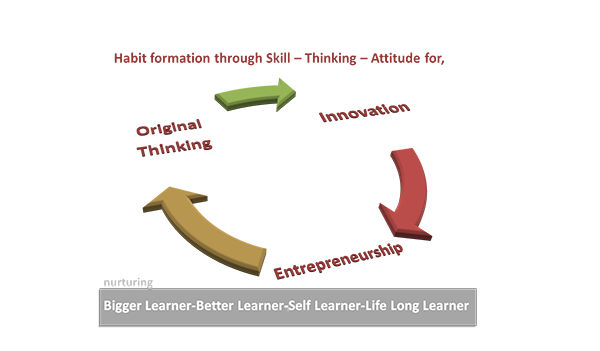
“We are what we repeatedly do.
Excellence then is not an act but a habit.” – Aristotle

